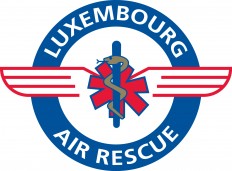Geoff Thompson: A Day in the Air with Luxembourg Air Rescue

On Monday I spent a day with the Luxembourg Air Rescue (LAR) HEMS (Helicopter Emergency Medical Service) at Findel, almost on their 26th anniversary - LAR was created on 18 April 1988, with the first helicopter arriving almost a year later; the offices are prefabs and hangars are temporary, waiting to move into a purpose-build building in a couple of years' time, just beside the present operational area.
With the possibility of a call coming in at any time - or not at all - the crew were able to explain how LAR HEMS operates. They could not have been more helpful and explained how they operate the helicopters, a bit about the fixed wing craft and also from the medical perspective. So, unless a call came in early, I would have the opportunity to research the background for writing this article, with the possibility of an emergency mission at a moment's notice always at the back of my mind. And theirs. The research part revealed that LAR had originally been formed by a group of fire-fighters in Luxembourg who had met with significant political and administrative opposition before succeeding due to their belief and perseverance. With five helicopters in the LAR fleet (apart from the fleet of planes it operates), two are based at hospitals (Air Rescue #1 in Luxembourg city, either the CHL in Strassen, Kirchberg or Zitha Klinik; and Air Rescue #2 at Ettelbruck) and one (Air Rescue #3) in Findel. The LAR HEMS crews are available from 08:00 until sunset, with the Findel HEMS unit responding to both Luxembourg and German emergency callouts; however, normally the Air Rescue #1 and #2 at the hospitals are responding to Luxembourg emergencies, with the Air Rescue #3 flying missions to the Rheinland-Palitinate (in and around Trier, with as far north as Bitburg and the Eifel region) and sometimes Saarland (down to Merzig, north of Saarbrucken). Air Rescue #3 is also performing Secondary Care Mission for transporting patients between hospitals (for example to transfer a newborn baby with heart problems from the ?Kannerklinik? to Brussels). It would be unusual for a Primary Care mission to involve a flight time of more than 10 minutes. A fourth LAR helicopter is used for training with a fifth on standby / undergoing maintenance. Last year, Air Rescue #3 flew over 1,000 missions. Each LAR HEMS crew consists of a pilot and navigator-cum-paramedic who sit up front in the cockpit, with the pilot on the right (no port or starboard terminology used here, although here's a lot of nn-o'clock to point out positioning of other objects relative to the aircraft), and a doctor in the cabin, along with just enough room for a patient stretcher and medical equipment all carefully stowed for emergency use, and a jump seat where, for example, a mother can take a seat for accompanying her sick child. On Air Rescue #1 & #2, the doctors are from the medical services / hospitals, while on Air Rescue #3 (Findel), the doctor is employed by LAR directly. LAR employs a total of 12 helicopter pilots, all working 5 days on, 5 days off, with five pilots on duty daily. Apart from the three allocated to the three operational helicopters, another two are allocated to fly the police helicopter also stationed at Findel. The LAR helicopters can be ready for take-off in two minutes for Primary Care missions, with up to 15 minutes for Secondary Care missions. Around 2,000 flying hours are required for flying with LAR. Most of the LAR helicopter pilots have military experience.
The LAR (and Luxembourg Police) helicopter fleet are all McDonnell Douglas MD902Explorers, manufactured near Phoenix in Arizona. In addition, LAR operates two Lear Jet 35As (for single patient, with a maximum flying time of 4 hours before refuelling) and two Lear Jet 45XRs (for two patients), both requiring a pilot and co-pilot for operations, as well as a doctor and paramedic. These fly on missions for LAR members as well as for insurance companies world-wide. The Lear jets have a one-hour aircraft preparation time with up to another hour for medical staff preparation. As an example, a recent mission was to New Delhi in India.
From the medical equipment perspective, 90% of cases can be treated with equipment and medications contained in one 28kg bag, for trauma and cardiac. Additionally, separate cases are for suction, a defibrillator, oxygen and also one for paediatrics. They also use various systems, some of which they have developed themselves, to aid them on being able to treat patients, for example the colour-coding of straps and treatment packages for different length children (the easiest way to determine dosages, etc.). In case of emergency the reduction of the therapy-free interval is important. The rescue helicopters can bring the doctor with the entire equipment to the patient as quickly as possible. First emergency call @ 11:05. Pilot, paramedic, doctor and myself on board and strapped in. Once clearance obtained from air traffic control and we were airborne. ETA (estimated time of arrival) in 7 minutes just north of Mettlach in Germany, almost due south. Flying at around 400m height (800m over built-up areas) we passed by Schrassig prison and the Kikuoka golf club in Canach, to name just a couple of landmarks.
Following the contours of the rivers, the pilot aimed for the destination using GPS and landed right beside a graveyard, with the medical team going to the assistance of the German paramedics who had arrived on the scene just 2 minutes before by ambulance. It turned out that a farmer passing by on his tractor had spotted a man unconscious just off the road in a small copse of trees, but nobody else was stopping. After the LAR doctor could release the patient into the care of the German paramedics and the formalities of the paperwork were done, we were airborne again, back to base. This is when things started to hot up; we were back less than two minutes when the alarm went and we were back on board again, this time heading north-east to Gentingen in Germany, just across the German border along the Our river and close to Bitburg, almost as far north as Vianden. Close to a campsite, we landed in a field right beside a house in which an elderly lady had fallen unconscious and a friend had alerted the emergency services. This time we had arrived ahead of the ambulance. Examined and treated by the LAR doctor and paramedic, they transferred the patient into the care of the German paramedics when the ambulance arrived and the patient was brought downstairs before being put on a trolley for the ambulance. Back in the air again and halfway back to the airport, we received a 3rd call. That mission was quickly aborted so we continued back to Findel. Preparing to land, we then received another call, this time for Merzig. Again, flying south and across the Moselle, before following along the Saar river. This time the patient was in an apartment block, so the closest we could get to it was a school playground, although the feasibility of landing at a supermarket was initially considered but quickly discounted. As soon as we landed, a German police car arrived to take the LAR doctor and paramedic to the patient. While they looked after him and accompanied him to the hospital in Merzig, I got back on board as the pilot flew to a small airfield where he refuelled the chopper. Saarlouis Duren was just like a truck stop, with three fuel pumps and one payment point which accepts credit card payments. With a 600l tank, we put in almost 200l and proceeded to the hospital, by which time the patient had been transferred and the LAR doctor and paramedic were approaching the helipad. Back to base in Findel for more paperwork and waiting for the next call to come through. But that's all for the day. Thanks to pilot Marcel Kurpiers, paramedic Sebastian Hanf and doctor Christoph Schüller for being so accommodating and allowing me a glimpse inside their daily working lives at the Luxembourg Air Rescue!
LAR membership costs just ?54 annually per person, or ?97 for a family. See www.lar.lu on how to join, as well as further details of benefits.
Photos by Geoff Thompson (above, L-R): pilot Marcel Kurpiers, paramedic Sebastian Hanf and doctor Christoph Schüller






